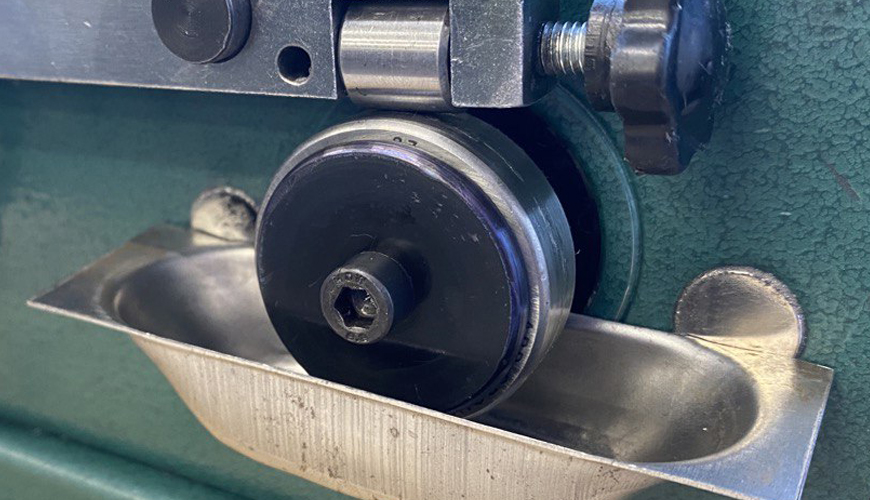RECORD
of proceedings of tribological tests
Purpose ot the test
Detecting anti-friction and anti-scuffing properties of NNN lubricating coolant (LC) in form of 5% solution
Stages of work
- Detecting anti-scuffing properties according to the Reichert method
- Detecting anti-friction properties according to ASTM G99 standard
1. Detecting anti-scuffing properties according to the Reichert method
1.1. Description of the technique and the equipment
The tests are held according to the Reichert method (see Fig.1) traditionally used to detect anti-scuffing properties of the constructive, and lubricating materials. The scheme of friction during the tests are given on Fig.2. A steel roller 1 rotating with frequency n=320 revolutions per minute is pressed to a fixed steel roller 2 by using a lever 3 with ordinary force F.
Geometry of the friction pair: a sample in form of 40 mm diameter roller – a counterbody in the form of 14 mm diameter and 14 mm length roller, their axles are perpendicular.
Materials of the friction pair: SHKH15 steel – SHKH15 steel
Lubricating material: NNN lubricating coolant, 5% solution / no lubricating material
Lubricating method: by dipping
Volume of the lubricating material in the reservoir: 17 ml
Sliding velocity: V=0.67 m/s
Load: F=121.4 N
According to the results of the tests, value of linear wear h on the fixed roller 2 is detected (see Fig.3), and value of linear wear intensity Ih as ratio of linear wear h to friction path L is calculated.
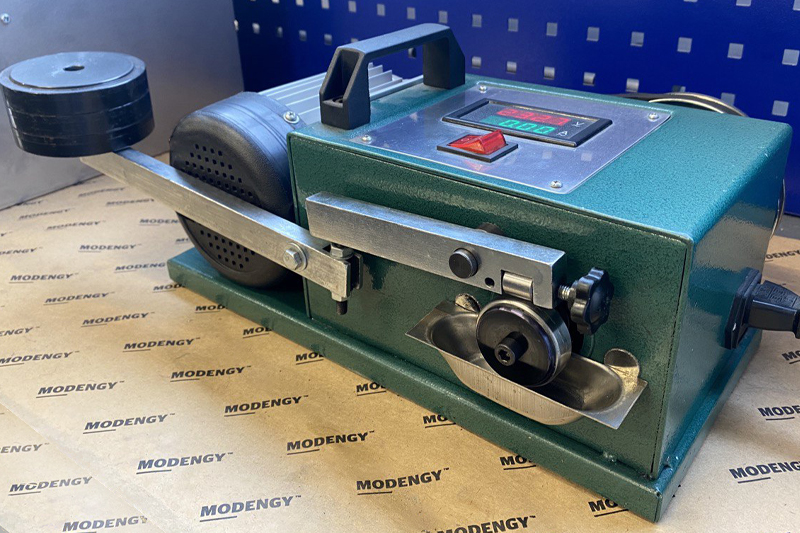
Fig.1. The Reichert friction machine
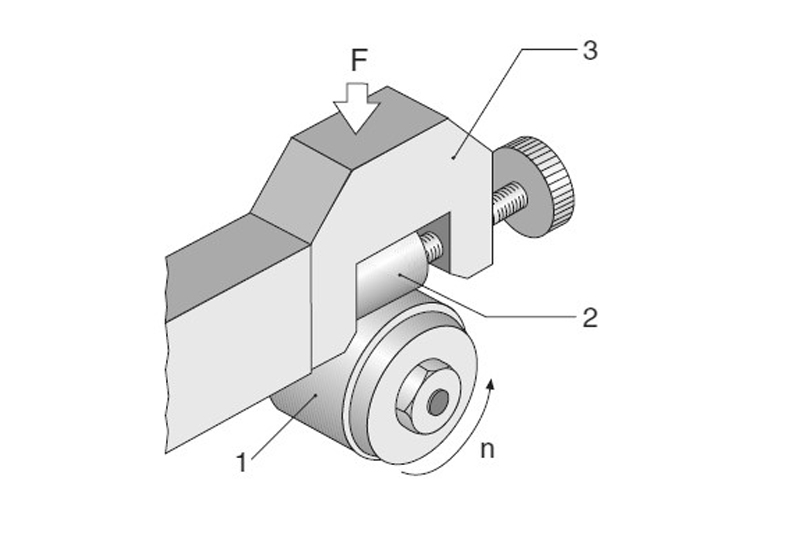
Fig.2. The scheme of friction during the tests according to the Reichert method: 1 – rotating roller; 2 – fixed roller; 3 – lever of loading
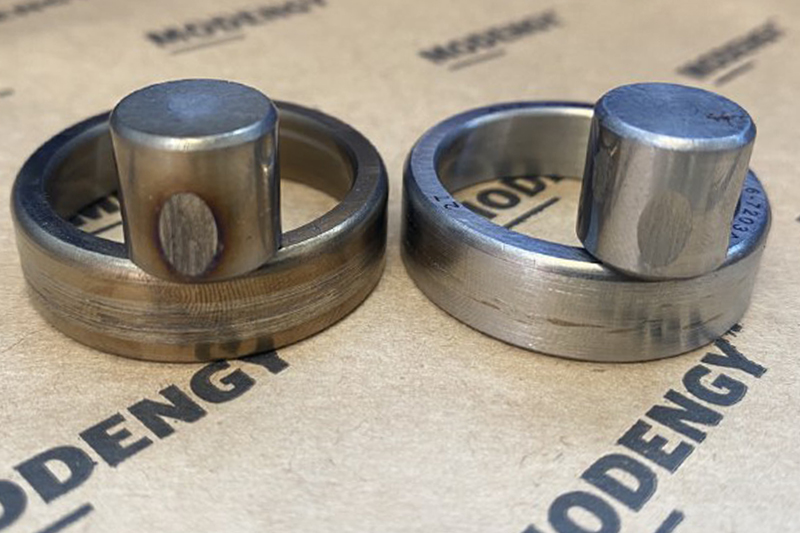
Fig.3. Appearance of the wear stains on the fixed rollers, and on movable rings after the tests without using LC (on the left), and by using LC (on the right)
1.2. The results of the stage
|
Test number |
Lubricating material name |
Friction path L, m |
Linear wear h, µm |
Wear intensity Ih |
|---|---|---|---|---|
|
1 |
NNN LC, 5% solution |
402 |
231 |
5,75·10-7 |
|
2 |
No LC |
402 |
442 |
1,10·10-6 |
2. Detecting anti-friction properties according to ASTM G99 standard
2.1. Description of the technique and the equipment
The test is held according to ASTM G99 standard on the sphere-to-disk scheme (see Fig.4) at sliding friction. The method described in the standard is used in international practice to detect friction and wear parameters.
Geometry of the friction pair: 6.35 mm spherical indenter according to GOST 3722 – a sample in the form of 80 mm diameter, and 0.8 mm thickness disk.
Material of the spherical indenter: SHKH15 steel, GOST 801
Material of the sample: AISI 430 steel
Lubricating material: NNN lubricating coolant, 5% solution / no lubricating material
Lubricating method: by dipping
Volume of the lubricating material in the reservoir: 17 ml
Sliding velocity: V=0.1 m/s
Load: F=10.2 N
The tests are held on the friction machine (see Fig.5). The friction machine is equipped with the NI LabVIEW automated system of control and data registering.
The spherical indenter is set into the holder (see Fig.6), and is pressed to the sample in the form of disk rotating with frequency n=38 revolutions per minute with the given force F. In process of the tests value of the sliding friction force is being continuously registered, and value of friction coefficient is being calculated automatically with simultaneous demonstration in the form of a graph on the screen.
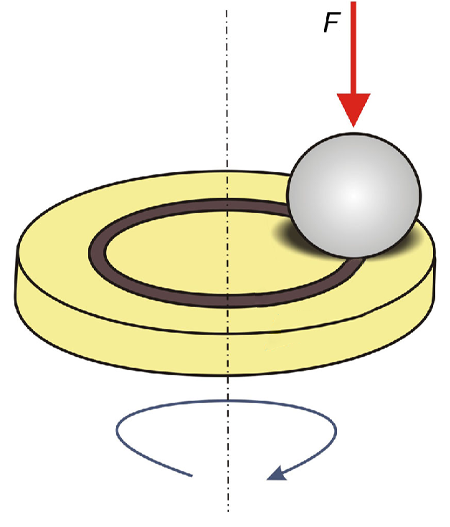
Fig.4. The scheme of friction during the tests
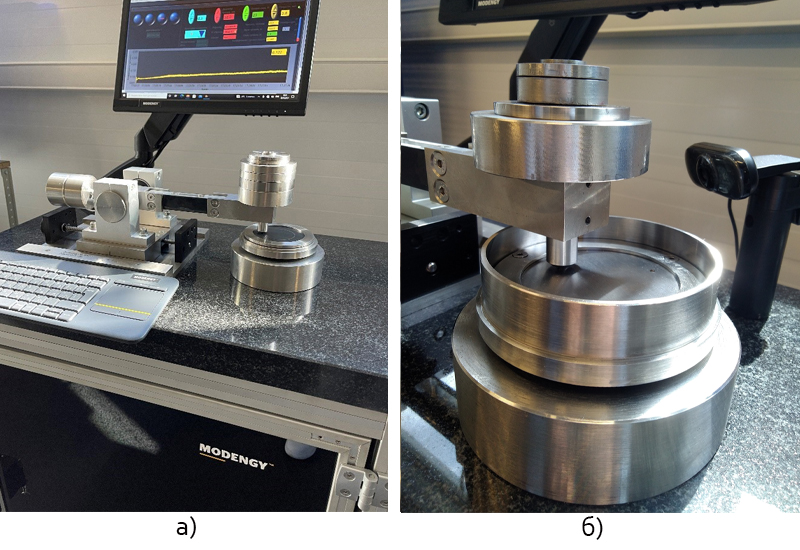
Fig.5. The friction machine (a – general appearance, b – the testing block with installed reservoir for a liquid lubricating material)
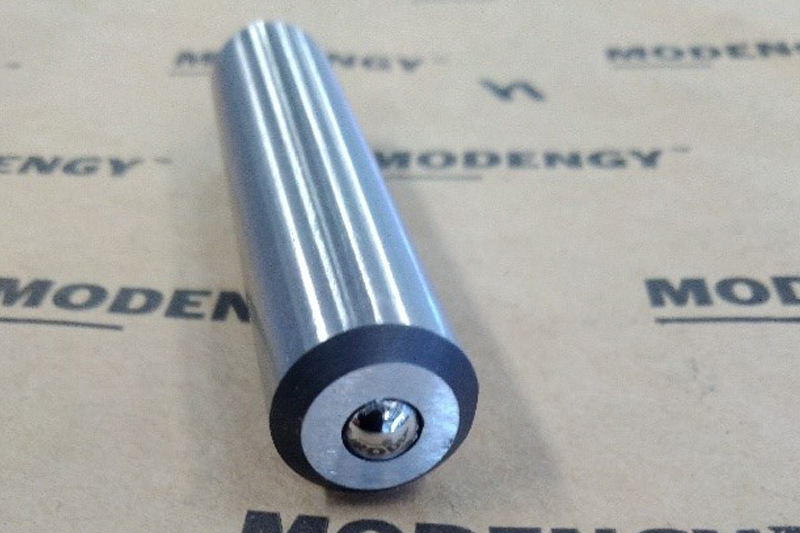
Fig.6. The holder with the spherical indenter set in it
2.2. The results of the stage
|
Test number |
Lubricating material name |
Friction path L, m |
Coefficient of static friction f0 |
Coefficient of sliding friction, average, fav |
|---|---|---|---|---|
|
1 |
NNN LC, 5% solution |
30 |
0,188 |
0,140 |
|
2 |
No LC |
30 |
0,950 |
0,667 |
The graphs of friction coefficient changing in process of the tests are given in Appendix 1.
3. General conclusions
Using NNN LC in the form of 5% solution contributes to:
- Reducing wear intensity Ih of the friction pair by 1.91 times
- Reducing coefficient of static friction f0 by 5.05 times, and average coefficient of sliding friction fav by 4.76 times
- Stabilizing friction process due to reducing spread of friction coefficient values, and to eliminating stick-slip motion
Appendix 1
The graphs of friction coefficient changing at performing works according to Stage 2.
Experiment No.1 (lubricating material – NNN LC, 5% solution)

Experiment No.2 (lubricating material – none)

If holding tribological tests is topical for you, address to the Modengy company, please.
Request information




 RU
RU
 EN
EN





